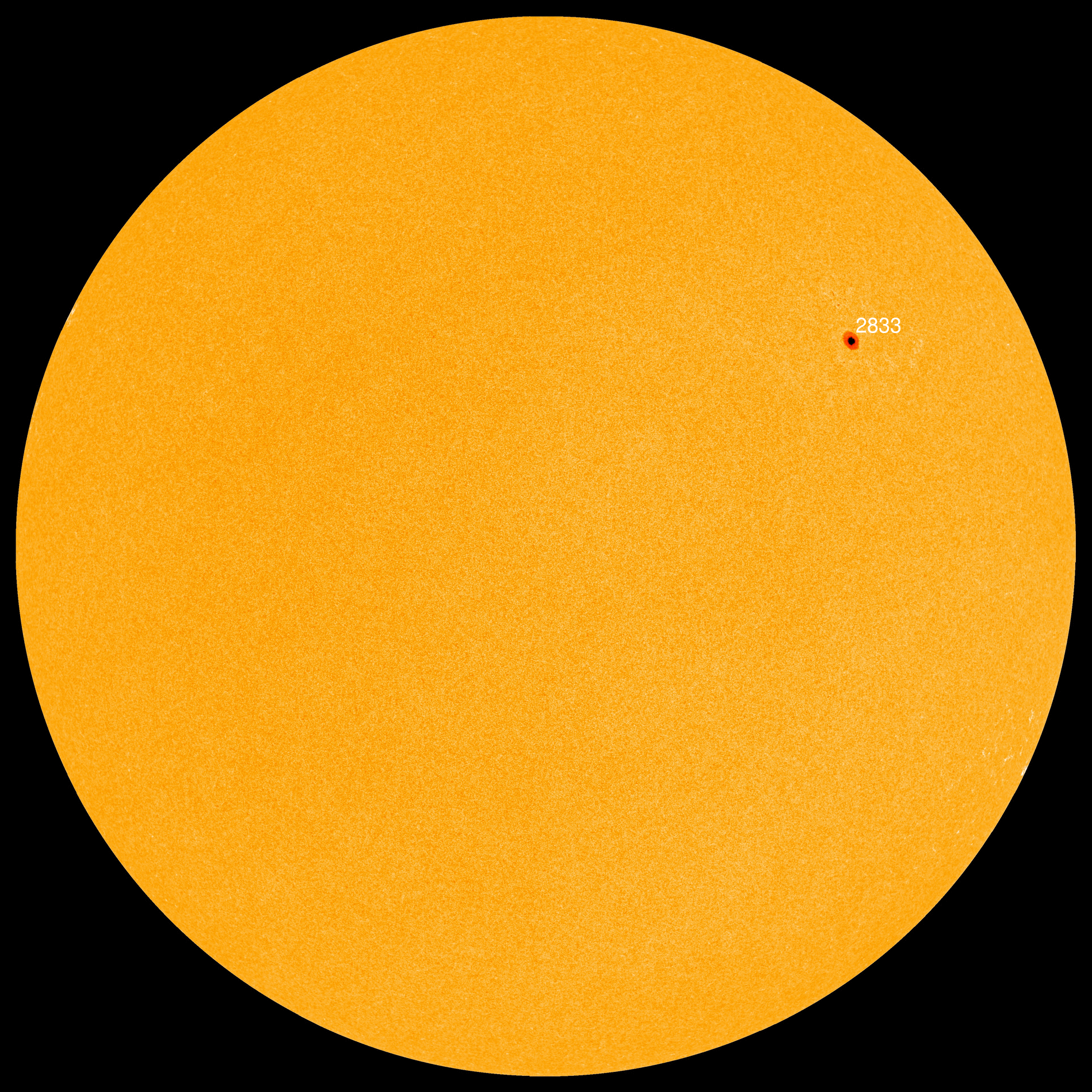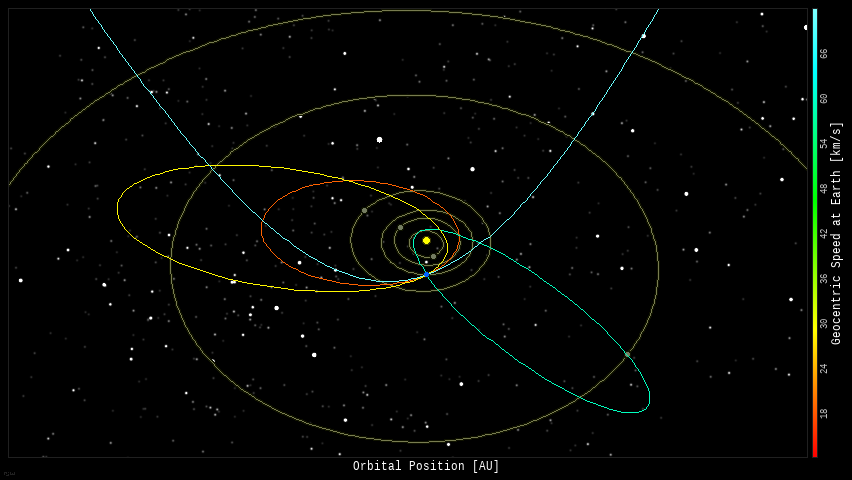The Hubble is DOWN!
The Hubble Space Telescope is in a safe mode after an issue caused the 1980’s-era payload computer to halt on Sunday, June 13 – the telescope itself and science instruments remain in good health.
The operations team is running tests and collecting information to isolate the problem. An attempt to restart the computer on Monday, June 14 failed; degrading computer memory is a likely source of the fault.

The Waxing Gibbous Moon appears in conjunction with the star Antares after sunset in the southwestern sky on June 22nd.

Jupiter and Saturn continue to appear in the southern morning sky all week; the Waning Gibbous Moon appears in conjunction with Saturn on June 27th, and Jupiter on the 28th and 29th.
Mars and Venus appear low above the west-northwestern horizon at sunset all week – getting a bit closer together with each evening.


- The Moon is a Waxing Gibbous – visible to the southeast in early evening, and up for most of the night.
- The Full Moon occurs on June 24th – rising at sunset, visible high in the sky around midnight, and visible all night.
- After June 24th, the Moon will be a Waning Gibbous – rising after sunset, visible high in the sky after midnight, and visible to the southwest after sunrise.

If you click on the Moon image above, or click this link, you will go to NASA’s Moon Phase and Libration, 2021 page – it will show you what the Moon looks like right now. If you click the image on that page, you will download a high-rez TIFF image annotated with the names of prominent features – helpful for logging your lunar observations!
Moon News:

The Sun has 1 spot: sunspot AR2833 – which will be rotating out of view in a couple days. SpaceWeather.com reports that it is stable and quiet – strong solar flares are unlikely.

You can view the Sun in near real-time, in multiple frequencies here: SDO-The Sun Now.
You can create your own time-lapse movies of the Sun here: AIA/HMI Browse Data.
You can browse all the SDO images of the Sun from 2010 to the present here: Browse SDO archive.
Solar Activity on Facebook – Run by Volunteer NASA/JPL Solar System Ambassador Pamela Shivak

Solar Corona
Solar wind speed is 34.1 km/sec ▼, with a density of 13.4 protons/cm3 ▼ at 1141 UT.
Click here to see a near real-time animation of the corona and solar wind from the Solar & Heliospheric Observatory (SOHO).
Sun News:

- Near-Earth Objects (NEOs) discovered this month: 146, this year: 1278 (+47), all time: 26,112 (+48)
- Potentially hazardous asteroids: 2185 (+2) (updated 2021-06-22)
- Total Minor Planets discovered (NASA): 1,095,225 (+1,485)
- Total Minor Planets discovered (MPC): 1,086,655 (-1,597) (updated 2021-06-22)
Upcoming Earth-asteroid encounters:
| Asteroid | Date(UT) | Miss Distance | Velocity (km/s) | Diameter (m) |
| 2021 MF | 2021-Jun-22 | 13.7 LD | 12.8 | 32 |
| 2021 LV6 | 2021-Jun-22 | 5 LD | 4.3 | 18 |
| 2021 LS5 | 2021-Jun-22 | 9.3 LD | 9.6 | 26 |
| 2021 MV | 2021-Jun-24 | 5.5 LD | 9.8 | 18 |
| 441987 | 2021-Jun-25 | 15.6 LD | 13.4 | 187 |
| 2021 JT8 | 2021-Jun-25 | 20.1 LD | 7.5 | 70 |
| 2021 LV2 | 2021-Jun-26 | 4.6 LD | 7.4 | 31 |
| 2021 LD6 | 2021-Jun-28 | 10.6 LD | 2.1 | 12 |
| 2021 MS | 2021-Jun-30 | 20 LD | 23.4 | 56 |
| 2010 XJ11 | 2021-Jul-01 | 4.1 LD | 16.4 | 59 |
| 2021 GM4 | 2021-Jul-01 | 12.1 LD | 6.3 | 150 |
| 2021 LE7 | 2021-Jul-02 | 10.9 LD | 11.4 | 30 |
| 2021 LG3 | 2021-Jul-03 | 19.4 LD | 8.6 | 84 |
| 2020 AD1 | 2021-Jul-04 | 2.8 LD | 4.9 | 20 |
| 2021 MC | 2021-Jul-06 | 3 LD | 7.1 | 23 |
| 2019 AT6 | 2021-Jul-13 | 4.2 LD | 5.1 | 11 |
| 2019 NB7 | 2021-Jul-17 | 15.2 LD | 13.8 | 12 |
| 2014 BP43 | 2021-Jul-21 | 17 LD | 8.5 | 18 |
| 2008 GO20 | 2021-Jul-24 | 12.8 LD | 8.2 | 123 |
| 2020 BW12 | 2021-Jul-27 | 16.7 LD | 9.8 | 21 |
| 2019 YM6 | 2021-Jul-31 | 17.9 LD | 13.5 | 135 |
| 2020 PN1 | 2021-Aug-03 | 9.6 LD | 4.6 | 30 |
| 2020 PP1 | 2021-Aug-03 | 13 LD | 3.6 | 16 |
| 2012 BA35 | 2021-Aug-11 | 6.9 LD | 4.2 | 62 |
| 2016 BQ | 2021-Aug-14 | 4.4 LD | 4.7 | 16 |
Asteroid News:

On June 21, 2021, the NASA All Sky Fireball Network reported 4 fireballs!
(4 sporadics)

Fireball News:
If you see a bright meteor or a fireball, please REPORT IT to the American Meteor Society and the International Meteor Organization!

Position of the planets & several spacecraft in the inner solar system on June 22nd:

Position of the planets in the middle solar system – the orbit of dwarf planet Ceres is highlighted:

Position of the planets, and a several transneptunian objects in the outer solar system – the orbit of TNO Arrokoth is highlighted:

Solar System News:

See a list of current NASA missions here: https://www.jpl.nasa.gov/missions/?type=current

ex·o·plan·et /ˈeksōˌplanət/, noun: a planet orbiting a star other than the Sun.
Data from the NASA Exoplanet Archive
* Confirmed Planets Discovered by TESS refers to the number planets that have been published in the refereed astronomical literature.
* TESS Project Candidates refers to the total number of transit-like events that appear to be astrophysical in origin, including false positives as identified by the TESS Project.
* TESS Project Candidates Yet To Be Confirmed refers to the number of TESS Project Candidates that have not yet been dispositioned as a Confirmed Planet or False Positive.
Exoplanet News:

2nd annual Capture the Dark Photography Contest
- Visit an International Dark Sky Park: https://www.darksky.org/our-work/conservation/idsp/parks/
- If you live in Michigan, visit the Michigan Dark Skies site: https://sites.lsa.umich.edu/darkskies/

Hubble Space Telescope – Helping us see the Beauty of the Cosmos

The Hubble Space Telescope has been on my mind the ENTIRE time I’ve been writing this post – I guess I’m worried about it. I just saw this post saying NASA has tried three time now to restart the Hubble’s computer – to no avail.
My heart goes out to the Hubble’s support team, and the astronomers who are losing their scheduled time with the telescope; I hope this does not foretell the end of Hubble’s mission.
Stay safe, be well, and look up!
Software Apps used for this post:
NASA Eyes on the Solar System: an immersive 3D solar system and space mission simulator – free for the PC /MAC. I maintain the unofficial NASA Eyes Facebook page.
SpaceEngine: a free 3D Universe Simulator for Windows. Steam version with VR support available.
Stellarium: a free open source planetarium app for PC/MAC/Linux. It’s a great tool for planning observing sessions. A web-based version of Stellarium is also available.






